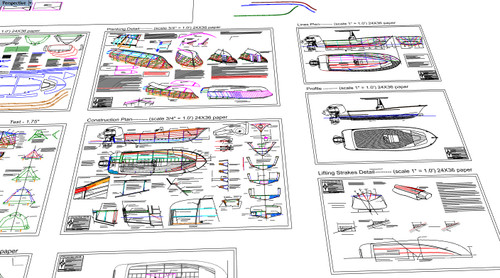Product Description
Expected release date TBD. We're working on it.
Plans for this windvane will include full size templates for all parts along with critical dimensions, recommended materials and things to watch out for. Some dimensions of the vane do not matter and allow this design to be fitted to almost all transom shapes and rake angles with proper mounting. The name of the game is LOW FRICTION with windvane self steering devices. We also plan to offer a kit of components to help you get started.
Version 1 of the B&B windvane seen the video below (Tour of Carlita) featured the same hardware below the pylon but a vertically pivoting vane was used intitially for it's simplicity. The downside is that not much power is generated on the tab in light wind and the vane can be more affected by heel angle. Also the lighy weight wing is more difficult to bild.
Graham writes..."Horizontal axis vanes and servo pendulum paddles are the most powerful self steering systems and are certainly required for large or heavy handed vessels. Carlita is a light well mannered boat and requires finesse rather than brute force. If you have not already seen the self steering video, check out the video and answer your own question. She is running almost straight downwind and surfing. After this video was taken she surfed to a little over 10 knots without misbehaving.
The key is an ultra light vane and very low friction. The lead counter weight weighs just 6 oz. to balance the vane. This makes the vane very responsive and reduces friction and lowers the mass moment of inertia. The next important feature is differential feedback in the linkage. This means that when the vane kicks the servo tab over and the tab turns the auxiliary rudder, the angle of the tab is rapidly reduced. If you do not have this feature the boat will hunt badly down wind where there is no natural balance from the sails as you do when close hauled. The whole thing is a delicate balance between power and feedback."
In the video below, Graham sails Carlita a Core Sound 17 Mark 3 with the windvane rudder disabled in the "raised" position and the boat steers herself with proper sail trim to windward. Notice that the tiller is simply lashed.
Graham continues..."I want the rudder fixed to aid directional stability. Before engaging the vane, I try to find the sweet spot for the rudder and lock it. I will then observe the course after the vane is engaged for a while and may rotate the vane at the clutch or move the tiller slightly. Usually I adjust the clutch because it did not have the right load on the vane when clutched. It is a powerful little vane and will tolerate a fair amount of imbalance. All self steering systems hunt so the better everything is balanced the less it will hunt.
Wind vanes are not for everyone. If you do not enjoy fiddling then they are not for you. Naturally they are worthless in waterways because the wind is too shifty. It did do a great job last week running down the Cape Fear River. The GPS showed a top speed of 8.75 knots and the speed was rarely under 6, at least 3 knots of that was current."















